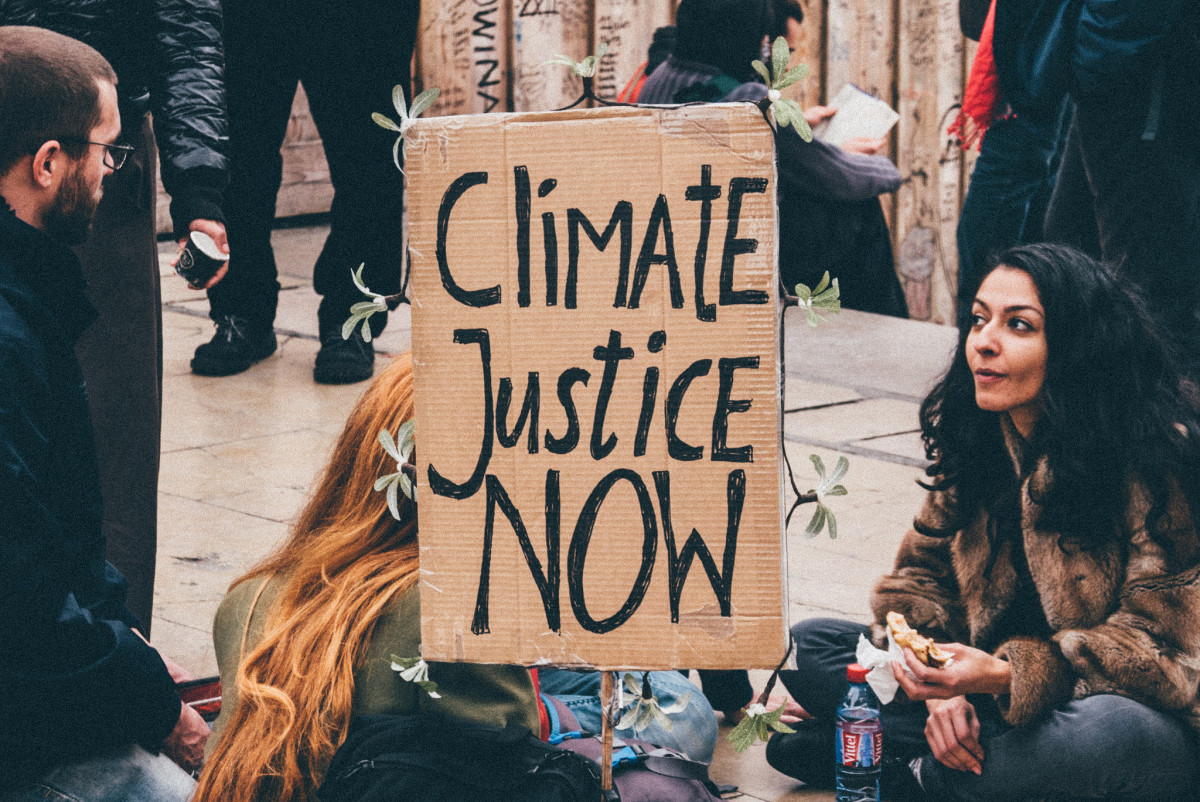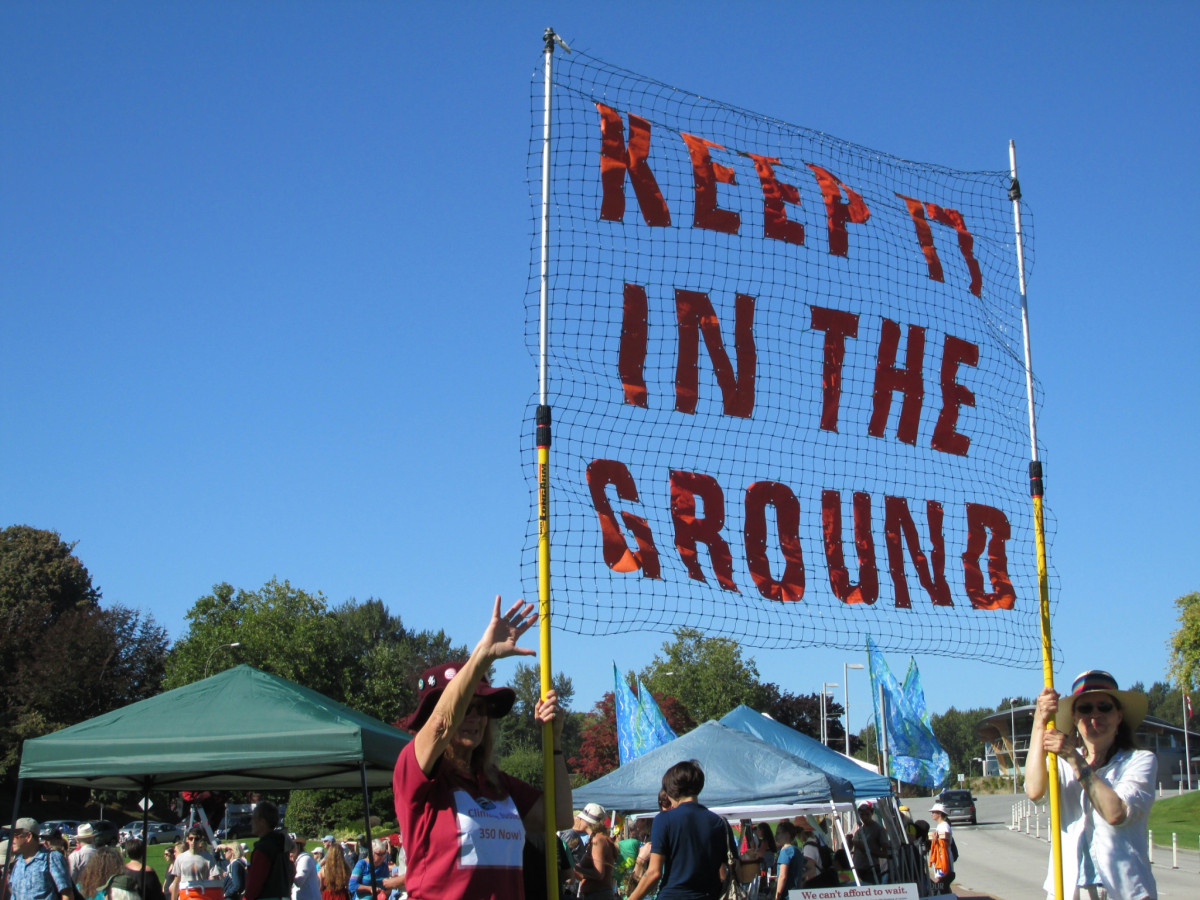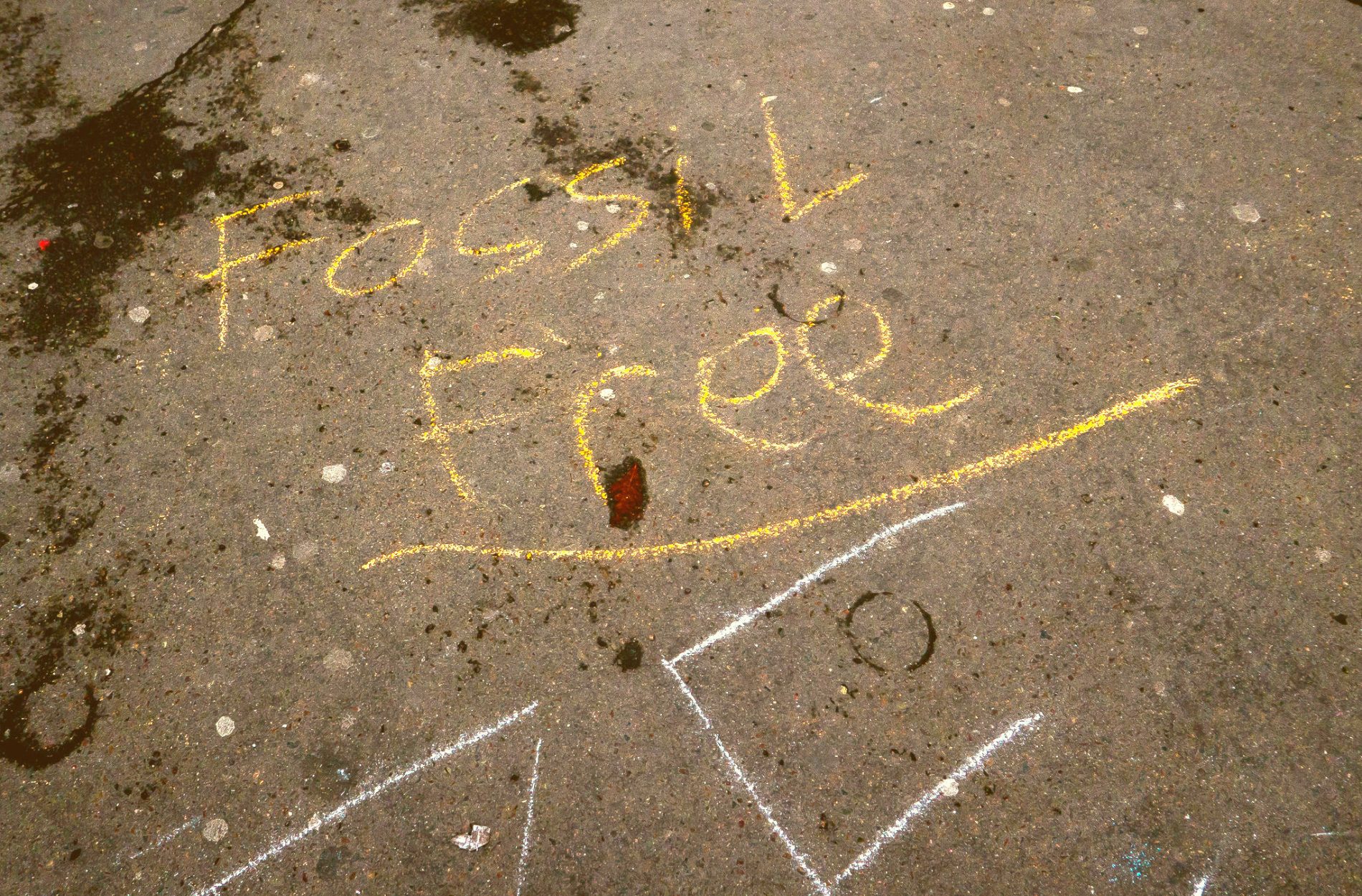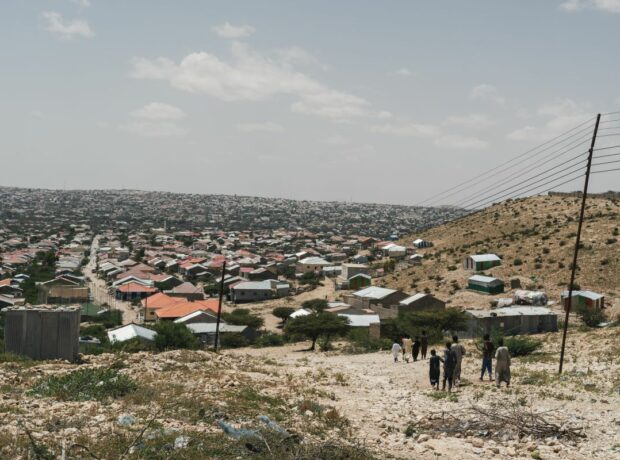Theo LeQuesne, a Fossil Free Campaigner, reflects on the strength of the activism at the Paris Climate Change Summit and how it can be harnessed to create an effective global struggle on climate change in the years to come. He recognises the importance of local struggles, but also argues for an inspiring global narrative which makes people feel they can make a positive difference as part of a unified international movement.
At 2pm on Friday 11th December, as the COP 21 Climate Change Summit in Paris drew to a close, 400 young people from the youth climate justice movement and youth groups representing thousands of climate justice campaigners from around the world came together to reject what they saw as the false solutions presented by the COP. Forming a human chain and singing, activists left the Green and Blue zones and headed towards their rallying point, where they would hear speakers including Xiutezcatl Martinez, 15 year old indigenous activist and musician, and Ryan Camero, California – based artist and activist and award winning environmental justice organizer.
Many of the young people gathered together outside Le Bourget conference centre were angered by the release of the draft conference text. Any reference to human rights, intergenerational equity and gender empowerment – all key principles of climate justice – had been deliberately eliminated from key articles or “forgotten” from the draft. Only at the last minute would some of these elements be reinserted into the document – this time in the preamble.
At the rally and press conference outside Le Bourget, the coalition of youth activists denounced the toothless technocratic approach being forced through the COP and called upon young people to rise up and fight for an alternative set of ideas and actions. They endorsed the Keep It In The Ground declaration, a document which demands fossil fuels be kept in the ground and has been signed by over 150 environmental and climate justice leaders. Activists reiterated their calls for zero emissions by 2050 and total decarbonization of the economy and presented a vision of the vital steps needed to keep fossil fuels in the ground through a just and science-based transition.
Prior to the rally, Dallas Goldtooth, an organiser for the Indigenous Environmental Network’s Keep Fossil Fuels in the Ground campaign, outlined what this transition should look like:
“Indigenous cultures are connected with the land, and the impacts of climate change and extreme fossil fuel extraction are destroying the land and our cultures with it. We need to defend the land and the planet, and we have no more time to waste on COPs and the false solutions being proposed by corporations and nation-states. To stop the destruction we need to leave fossil fuels in the ground. The assertion of our Indigenous rights on our Indigenous lands is the way to stop extraction at the source and is the solution to climate change.”
But when these activists all return home, how do they keep the fires burning? How do they ensure that this disparate set of groups is able to fight together in common cause? Certainly there is nothing wrong with the idea that they will go home and fight local battles. When activists move away from the COP and back home to different local fights, the extent to which climate justice is a global struggle made up of thousands of local struggles becomes clear. Yet I would argue that for the work of climate justice campaigners to be meaningful, it is essential that campaigners are able to see where the global appears in the local and indeed the local in the global. The dots don’t always have to be connected but they should at least be seen.
To stop the destruction we need to leave fossil fuels in the ground
It makes sense that campaigning should be localized and context specific. Climate justice campaigns should reflect the needs and experiences of those most directly affected within a given region. In other words activists and organizers should be using tactics and messaging that are relevant to the communities in which they operate. For example, as Naomi Klein points out, “what has emerged in the movement against extreme extraction is less an anti-fossil fuels movement than a pro-water movement.” While access to clean drinking water is a basic concern relevant to almost everyone within any given community, clearly some communities’ access to clean water is more threatened than others. It is therefore a sensible strategy to base campaigns around water and the potential for its contamination when confronting the extractive industry threatening water supplies in your back yard or front yard. Sometimes however, concerns about jobs may trump concerns about water. So knowing what is important to your audience is essential to a successful campaign.
For example, at University of California Santa Barbara after the Refugio state beach oil spill in May 2015, divestment activists showed the links between the UC’s investments in Exxon Mobil and the company’s oil then polluting the nearby sea and beaches. Staging a mock oil spill on campus next to a sign saying “paid for by UC Regents”, along with other slogans like “invest in students not spills”, divestment activists brought the result of the university financing fossil fuels directly into students’ lives. Activists used messaging that fitted directly into an event affecting a particular campus to get students to identify with the story. The story was contextualized in a local event but drew upon the discourse of the international divestment campaign to delegitimize the fossil fuel industry.
The question then is how is it possible to create mobilizing narratives that capture the specificity of local campaigns within the essential framework of global climate justice? This is an important question because, as Wen Stephenson has argued, climate justice is about knowing people are fighting for each other, not just preventing one pipeline or one refinery expansion in one community at a time.

Photo by Julien B.
I have recently discovered the EJ Atlas, which maps out thousands of environmental and climate justice struggles happening across the world and has helped me visualize where they intersect while being able to appreciate their specificities. Once we can see the dots, then we may join them in fruitful ways. For me this is evidenced in the links being shared between indigenous communities fighting the tar sands in Alberta Canada, the farmers and First Nations’ people blocking pipeline infrastructure designed to transport the tar sands across North America, and residents of Richmond California preventing the upgrading and expansion of the Chevron refinery that would allow it to process tar sands transported from Alberta to Richmond. An exciting network of opposition and creativity is being established through local struggles joined together in the wider discursive framework of climate justice.
Each of these groups has a different stake in fighting tar sands infrastructure in their local community. For some it may be the health of the community, for some it may be the impacts it has on land value, for some it may be the potential for the destruction of the ecosystems upon which they depend, and for some it may be the climate crisis too. This kind of transnationally linked strategy, in which shutting down the tar sands and working on creating the new “living economy” are shared goals, while the tactics, framing and reasons for action may be very different, is what a global climate justice strategy could build upon. Linking local struggles to a broader discursive framework of climate justice provides a legitimacy and power that atomized local struggles simply do not have. Meanwhile, ensuring that campaigning is relevant, meaningful and effective at the local level is just as important. By combining these global and local dimensions, it seems possible to build an accountable, resilient and powerful global movement rooted in local struggles across the world.
This approach not only empowers individual communities but also can then make relevant a critique of the systems of oppression and dynamics of capitalism that are often absent from local climate justice campaigns. It can play a pivotal role in turning NIMBY into NOPE (Not In My Back Yard to Not On Planet Earth). Alongside this ability to link disparate actors together, a global narrative also has to be an appealing one that makes people feel positive and empowered about engaging with climate change as an issue. This is what will make the Paris protesters keep on campaigning, and persuade others to join their number.
Fossil fuel divestment exposes climate change for the moral crisis it truly is
I have been campaigning with Fossil Free since early 2013 and so my arguments and evidence tend to be drawn from this somewhat limited experience. Nevertheless I think Fossil Free provides an excellent example of linking up local struggles within a global narrative in an appealing way.
Fossil Free is a divestment campaign targeting the 200 most polluting fossil fuel companies and demanding that institutions and universities divest from them. Divestment is the opposite of investment – it means taking your investments out of a particular company, industry or venture. The purpose of fossil fuel divestment is to expose climate change for the moral crisis that it truly is. This is achieved through demonstrating that those to blame for the climate crisis are not individual citizens but the fossil fuel dependent social and economic system they are locked into.
Moreover, it places responsibility for society’s failure to move away from fossil fuels squarely on the shoulders of the fossil fuel industry, which it accuses of having spread doubt and denial, as well as financed and lobbied politicians who maintain society’s fossil fuel dependency. The case for fossil fuel divestment rests on the simple premise that to avoid catastrophic levels of global warming, 80% of fossil fuel reserves must remain in the ground, unburned. Fossil Free shows a clear conflict between the interests of the fossil fuel industry and maintaining a stable climate upon which human civilization depends.

Photo by Robert Ashworth
In the three years since Fossil Free’s creation, it is clear that the campaign, at least in its immediate demands for divestment, has met with enormous success. By late 2015, over 500 campus divestment campaigns have emerged, along with hundreds more campaigns at city councils, faith groups, and public institutions. The approximate value of assets that have now been withheld from coal and/or gas, and/or oil stands at $3.4 trillion, with several billion having been directly divested from coal, oil or gas companies. Worldwide a total of 498 institutions have divested, primarily in the United States.
Notable divestment commitments include the Rockefeller Brother’s Fund, The World Council of Churches, the Guardian Media Group, The British Medical Association, the University of Warwick, Oxford University (coal and tar sands only) and Stanford University (from coal only). In the summer of 2015 the University of California withdrew its direct holdings in coal and tar sands development. A report from the Smith’s School of Environment and Enterprise at Oxford University found that the fossil fuel divestment campaign is the fastest growing divestment campaign in history.
Divestment is ultimately about challenging power
Perhaps most demonstrative of the campaign’s growing significance was Bernie Sanders refusing to take money from the fossil fuel industry, and, along with seven other senators, using Fossil Free’ rhetoric when introducing the “Keep It In The Ground” Act. The Act would “ban all new fossil fuel leases on public lands.” Though only symbolic, the Act shows how influential divestment’s rhetoric has become. Indeed since then, “Keep It In Ground” became a much-used frame at the Paris COP and was adopted as the title of the Indigenous Environmental Networks “Keep It In The Ground” declaration.
The divestment story is ultimately about challenging power. It is in the interests of the powerful to maintain a narrative in which society’s response to climate change is individualized and atomized, with no critique of the system itself. Divestment, within the context of climate justice, has helped create an alternative narrative that undermines the stories of those in power. This narrative reflects the importance of solidarity, collective action, and resistance against an industry that is prepared to let the climate collapse along with human civilization that depends upon it. The atomized response has led to the failure of false solutions, societal disinterest, and disempowerment. The collective response that divestment advocates is uniting a generation of young people against the fossil fuel industry and for a just transition towards a sustainable and ethical economy.
The strength of unity that the youth climate movements displayed in Paris, successfully linking so many diverse groups and struggles, can reinforce the global Climate Justice Movement. But this will only happen if we can appreciate the specificity of local struggles across the globe while inspiring people to feel they can make a positive difference as part of a broader stronger unified global movement. In closing it is worthwhile reflecting on John Jordan’s thoughtful approach to a similar question. Writing on Climate Justice Strategy prior to COP21 he says: “Only a broad space of disobedience where we do not condemn the actions of others will keep us strong. We must hold ourselves together in unity and diversity, just like the rich networks that make up the resilient ecosystems we are protecting.” Embracing a diversity of strategy and tactics make our movement stronger, relevant and inclusive, embedding these within broader strategic networks is just as essential.
Banner photo by Julien B.



